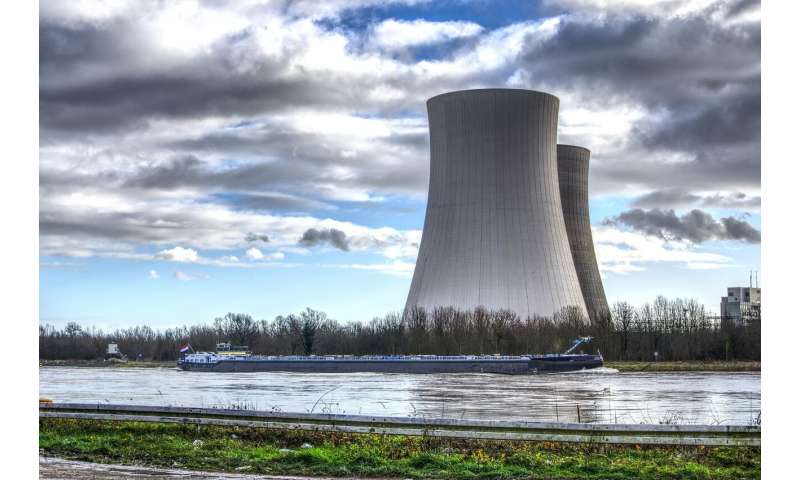Storing the most dangerous materials on earth: How modeling is unlocking the potential of nuclear power

This year, leaders from around the world met at the International Atomic Energy Agency's Scientific Forum to agree the important role nuclear energy will play in mitigating the climate crisis. The momentum for nuclear energy already exists, with the energy source already providing about 10% of the world's electricity.
But radioactive waste from nuclear power plants has been one of the most significant environmental challenges of recent decades. Spent fuel from nuclear reactors remains highly radioactive—and dangerous—for hundreds of thousands of years.
With the need for reliable low-carbon power more crucial than ever, researchers need to find ways to ensure nuclear is a safe, viable option. How do we effectively model how radioactive waste affects materials, so we can design safer storage methods?
I lead an interdisciplinary team at Queen Mary University of London that is leading research into safer nuclear waste storage. Our team's work addresses limitations in the standard software used to model radiation damage on different materials.
These new modeling methods are reshaping international policy on the safe disposal of nuclear waste and enabling real-world advancements to make nuclear energy a more viable source of low-carbon energy.
Material modeling on the fly
Identifying new ways to store nuclear waste requires molecular dynamics simulation, to help researchers model how materials interact with radioactive matter. But current software can't efficiently simulate or analyze large file sizes. And it doesn't have the necessary algorithms for dedicated radiation modeling. This creates bottlenecks limiting the feasibility and efficiency of this method.
Our team at Queen Mary have designed new ways to overcome these computational weaknesses. For the first time, our high-performance algorithms can model systems and high-energy collisions to creative realistic models of 'real-world' nuclear encapsulation materials.
This allows researchers to move from postmortem analysis to 'on-the-fly' analysis—more simply, from analyzing samples after tests have been run, to simulating the tests and generating results in real time.
The new algorithms are also more capable of running and analyzing large systems, allowing teams to expedite their research. This is done by providing more effective energy dissipation and faster temperature relaxation via a 'thermostat bath'.
Our code has unlocked efficiencies and scalability that has influenced international policy on nuclear materials. It's also for this work in condensed matter physics that I was awarded the 2020 EPSRC-funded Collaborative Computational Project (CCP5) Prize, a testament to our team's breakthroughs in the field.
From models to real-world impact
Armed with our research, international organizations are shaping the innovations and policies that help advance progress on nuclear energy generation.
For example, the UK National Nuclear Laboratory is using the team's algorithms to further their interest in the use of ceramics as safe casing materials for radioactive waste. If successful, this could provide a lower-cost and more sustainable storage alternative for nuclear waste, helping advance its viability for sustainable energy generation.
And the UK Atomic Weapons Establishment is also using our code to assess and safeguard the UK's nuclear deterrent, improve its storage of nuclear materials, and streamline working processes.
Lastly, the IAEA has used our expertise in their new Coordinated Research Project designed to address current interest in radiation and nuclear sciences, informing best practice for the safe disposal of nuclear waste for the IAWA's 193 member states across the world.
In fact, my team and Queen Mary have now signed a formal research agreement with IAEA involving data sharing with major partners worldwide involved in research on nuclear waste forms.
Open access for a nuclear future
Crucially, our software is making real-world impact because it is freely available for research groups around the world. The IAEA has praised the easily shareable nature of the modeling algorithms as an enabler of international progress on nuclear research.
Armed with this invaluable new radiation modeling, organizations across the UK are making crucial advancements in the field of nuclear storage and building more optimal solutions to enable nuclear power. Queen Mary's research, and its impact on international policy, is enabling the international community to safely store some of the world's most dangerous materials.
The benefits of this, from expedited radiation modeling to large-scale safety assessments, are advancing innovations in the storage of nuclear waste. As nuclear energy becomes an ever more significant step towards our path to net-zero, we're paving the way for safer nuclear power.
Provided by Queen Mary, University of London